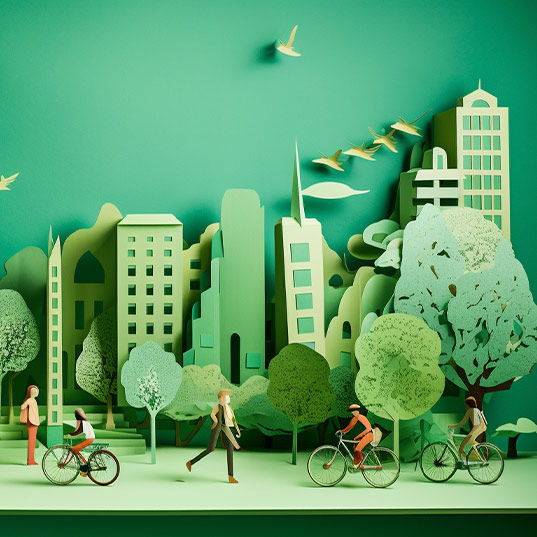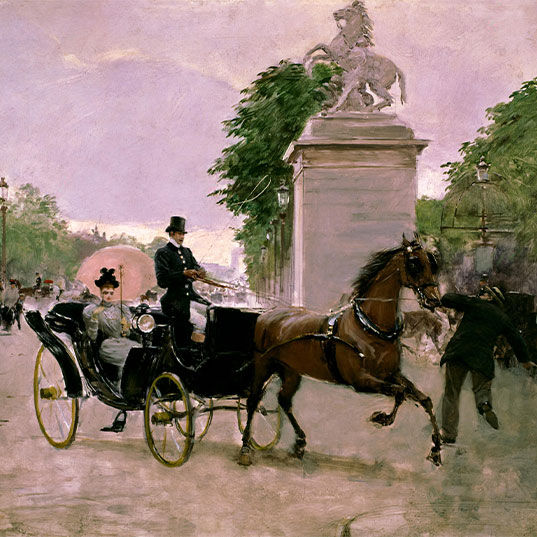8 articles for practicing sustainable mobility
How transport causes pollution, the benefits of sustainable mobility and what cities are now doing to adapt to this new urban paradigm.
Over half of the planet’s population live in cities. In 2050, this number will have increased to almost two-thirds of the human race. The inevitable agglomeration in towns and cities present many challenges the United Nations is trying to address with its Sustainable Development Goal 11: making cities and human settlements inclusive, safe, resilient and sustainable.
It would be impossible to achieve this goal without a profound reform of the way we live in cities. Accepting the importance of sustainable mobility will be key to any change. The world is screaming for fossil fuels to be banned, traffic to be reduced in cities, and for more sustainable transport.
In these 8 articles, we show how transport causes pollution, the benefits of sustainable mobility and what many of the world’s cities are now doing to adapt to this new urban paradigm.

Transport, the main cause of environmental pollution
Emissions produced by transport are not only irreversible in warming the planet, they are also one of the main causes of air pollution. The latter is a terrible environmental problem, affecting our health much more than we think; it causes around 7 million deaths a year worldwide. In this article about air pollution, you will learn about the effects of pollution on human health.
The effects of air pollution on human health
Transport restrictions as a containing measure
Many city halls have sustainable mobility programs to reduce air pollution when contamination reaches alarming levels. Restrictions on the most polluting cars and proposals to incentivize sustainable transport are just two measures cities such as Madrid, Mexico City, Beijing and Paris have launched.
Sustainable Urban Mobility Plans (SUMPs)
Other cities have gone further and, instead of merely reacting to the problem of air pollution, their administrations have developed original and smart SUMPs, action plans aimed at introducing more sustainable transport. Portland’s 20-Minute Neighborhoods and Jakarta’s Car-Free Sundays are just two sustainable mobility examples.
The cities we’d love to live in

Inclusion, a must for sustainable mobility
For cities to realize sustainable mobility, they must make accessibility one of their urban development priorities. Developing accessibility solutions is a duty of city halls, but Google already has a tool that can help make urban spaces more accessible. Google Maps, for example, has integrated accessible routes for wheelchairs and people with physical disabilities.
Google Maps’ accessible routes for people with reduce mobility
Shared vehicles, powered by renewable energy
Our unsustainability, when moving about the city, is becoming more and more difficult to justify. The range of alternatives being employed in many big cities is ever greater, from clean public transport to all kinds of electric vehicle sharing systems that do not emit any pollutants locally.
Do we know where the energy for recharging them comes from?
Pedaling is as non-polluting as it gets
One of the most sustainable, and meanwhile healthy, mobility options is cycling. Since Copenhagen launched its shared bicycle service in 1995, many places have introduced this service as part of their sustainable mobility plans. Spain is one country where most cities have employed this measure, but it is still not used enough by citizens.
Public bicycles have come to stay
Pros and cons of buying an electric bike
For more than half a century the bicycle has been considered, in big cities especially, as a leisure item rather than a transport mode. This is changing. Electric models streaming onto the market have made the bicycle a perfectly viable sustainable transport alternative. But what factors should we consider when buying one?
Sustainable mobility also comes down to the road
Photosensitive paint charged by the sun during the day and lighting up at night, electricity-generating micro-turbines spinning in air streams caused by cars moving, dynamic paint able to display different signs according to the weather… sustainable mobility is not just about transport modes, but also the infrastructure used by traffic. Some great ideas are coming to the fore in this area.
Sustainable mobility: smart highways and more







